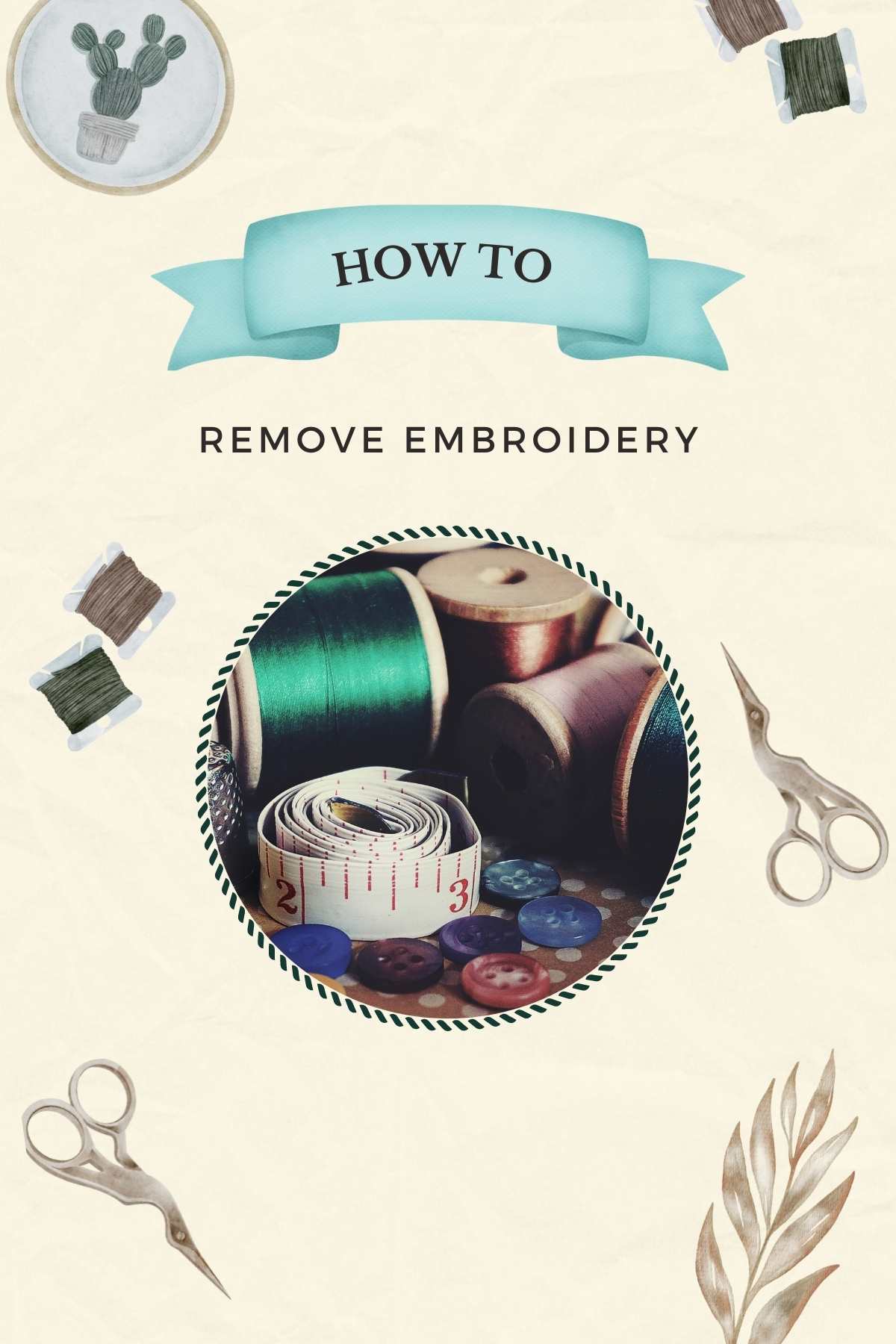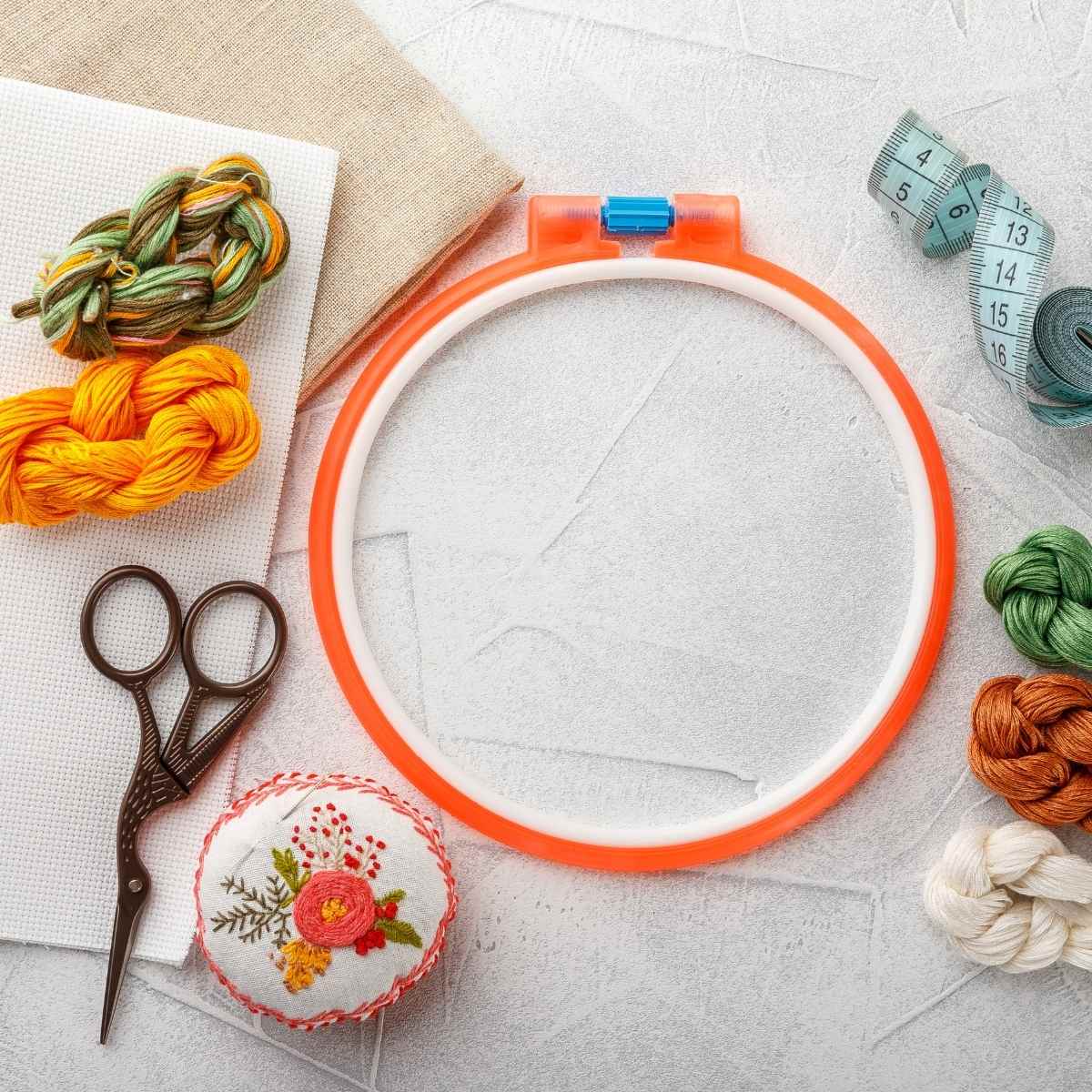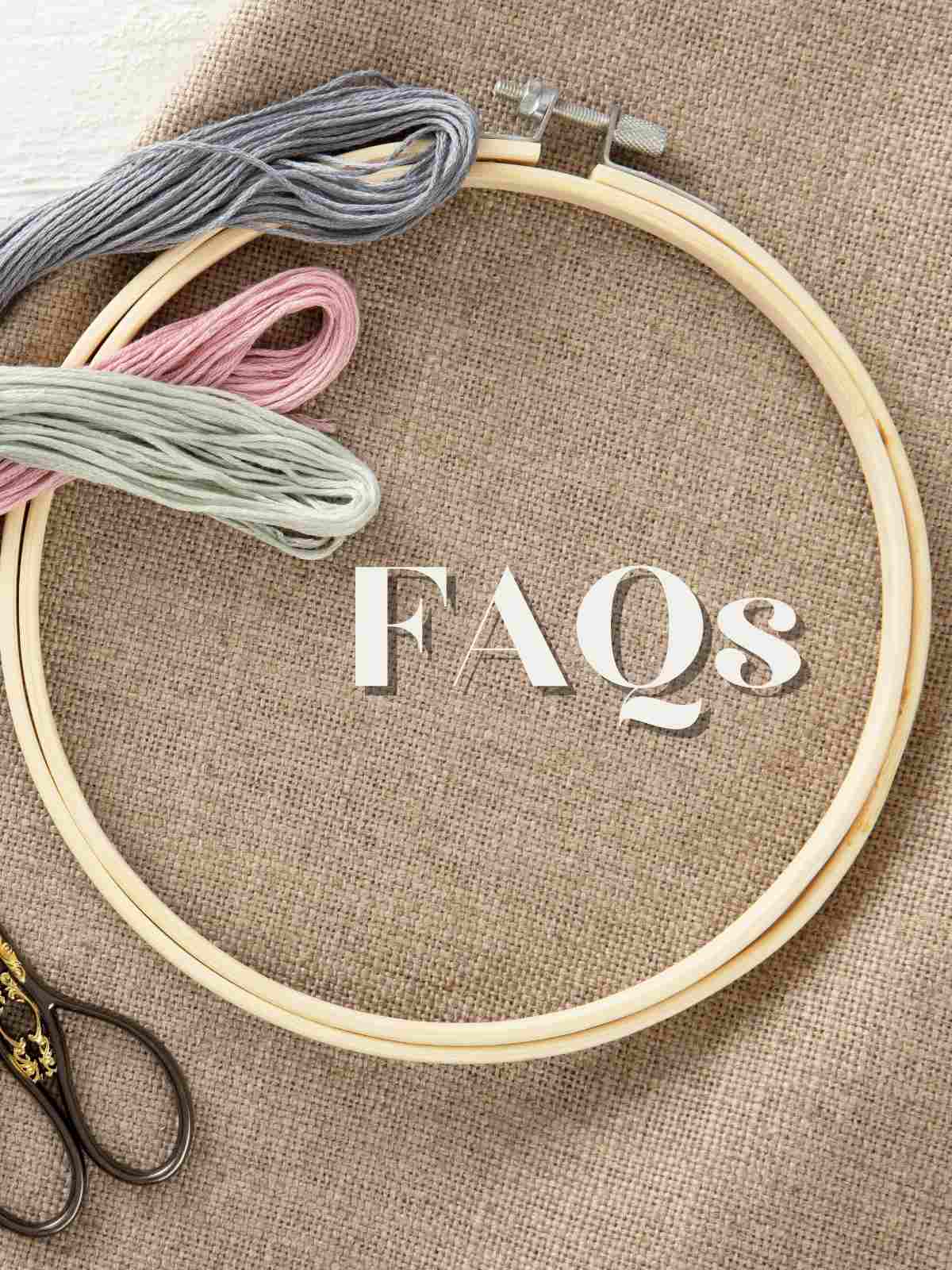It is definitely useful to know how to remove embroidery properly. It can be beneficial to be familiar with embroidery removal to fix a mistake in your project, or you can use this process to remove embroidery to reuse your fabrics for a new creation!
Removing embroidery is not as difficult as you may think! While it may be time consuming, it can be made fairly simple with a variety of methods. From an everyday item like a disposable razor to the more formal embroidery eraser, with the right tools, removing embroidery is an easy to learn process that can come in handy when needing to get rid of unwanted stitches.
You shouldn’t be stuck with embroidery you’re not happy with. Knowing how to remove embroidery is an incredibly useful skill to have in your arsenal in order to rectify mistakes, revamp a project, or give you a clean slate.
How To Properly Remove Embroidery
While there are many methods that are applicable for embroidery removal, there are a few tools you should always have on hand no matter which process you use.
A tweezer is a must for plucking out small stitches that may be too delicate to pull out with your hands. Also, because removing embroidery calls for a clean surface to work with and may result in a ton of loose threads, a lint roller is another must have tool. No lint roller on hand? No worries! Using the adhesive side of tape to pick up unwanted particles by placing it down on a section and lifting it up works the same way as a lint roller does.
We will go over a few methods for removing embroidery, but no matter what tool you use, the steps are pretty much all the same.
Step 1: Turning The Fabric Inside Out
Working from the inside is a must for removing embroidery. No matter what item you’re removing embroidery from, whether it be a t-shirt, hat, napkin, whatever, this is always the first step in the process. It is paramount because it allows you to see the stitching better and will avoid damaging the outside of the product that will be visible.
If turning our product inside out is step 1, this would be step 1a: make sure your article of embroidery is laid flat and if possible, pulled taut. If you’re working a small, hand stitched creation, it would be helpful to place it back into an embroidery hoop. This step allows you to work more precisely and make your embroidery removal even more seamless (pun intended).
Step 2: Tearing The Stitches
Using a disposable razor:
For a budget friendly removal, or if you’re in a pinch, you can grab a disposable razor and use this as your embroidery removal tool. Run the razor over the stitching gently a couple of times. The blade of the razor will cut the stitches loose, and you’ll be able to pull them out from the front with ease.
Using an embroidery eraser:
This tool may be the quickest way to tear up your stitching to remove them. To use it, place the teeth at the edge of the embroidery and make sure they are digging into the threads. Turn the tool on, and slowly push it forward to follow the stitching. Do this in segments, lifting and repositioning the embroidery eraser after every section to ensure nothing is missed.
Using a seam ripper:
This tool looks kind of like a hook, with one end sharper than the other. You will place the hook underneath the threads and then gently lift it upwards so they will be cut. Work slowly and in small chunks with this tool to avoid damaging the fabric.
Using embroidery scissors:
With this method, you have to be very careful not to cut your fabric and ruin the entire piece! Slide the very tip of one side of the scissors under the thread and gently snip them. Work in small sections and be very diligent. This is a more time consuming process, but it still yields the same results nonetheless.
You can also use manicure scissors if that’s what you have on hand!
Step 3: Getting rid of the remaining threads
Now that the stitching is cut loose, you can begin the actual embroidery removal. Flip the product right side out and begin to slowly pull on the threads in order to get them out. This is where the tweezer would come in handy, so you can remove the thinnest threads that may be too delicate to grasp with your fingers. If you come across a stitch or two that are still stuck, use a seam ripper or embroidery scissors to carefully cut them and then repeat the tweezer removal process.
If the piece is extremely intricate, it may work in your favor to have a magnifying glass on hand so you can be certain that every last thread and stitch is removed.
Step 4: Cleaning up your surface
Now is when you use the lint roller or tape to clean up any loose threads on your fabric. Make sure to remove every particle from both the front and inside of your piece.
Finally, throw your fabric into the wash and you have a fresh, embroidery free piece to work or rework with!
FAQs
Will removing embroidery leave holes?
While you may see “holes” in your fabric, what this really is, is the fibers of the fabric that were slightly opened in order for the thread and needle to be pushed through.
However, it is likely that embroidery removal may leave you with small holes in your fabric. But this can be easily fixed! One of the methods to do so is ironing the piece in order to realign the threads of your fabric.
How do I remove embroidery with a backing?
You would follow the same steps as listed above, however, before using the tools to slice through the threads, remove the backing by gently tearing it away.
Pattern Ideas You’ll Love
- 30 Mushroom Embroidery Patterns – Mushrooms are seriously the cutest little design! And the best part is that there are so many different ways to create an adorable mushroom pattern, there is one to fit every piece. They’re extremely personalizable and make for great, unique gifts for anyone in your life, or you can create one to use as an art piece in your home!
- 25 Small Embroidery Designs And Patterns – A small embroidery design can take any item from simple to one of a kind! We have compiled a list of over 20 of our favorite, adorable small patterns to add to any hat, scarf, handkerchief and more. In this guide, you’ll be able to get some inspiration for your next project no matter if you’re someone just starting out with embroidery or have a little more experience.
- 15+ 3D Puff Embroidery Ideas – Ready to take your embroidery to the next step? Check out these puff embroidery ideas! Add some texture and definition to your designs and literally make them POP. With just a few extra steps, your embroidery can go from a beautiful 2D piece to an extraordinary 3D puff piece that will no doubt be the focal point of whatever item you embroider it on.


